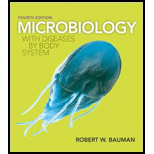
To tell:
Why is the
Introduction:
Digestive system in humans consists of gastrointestinal tract and accessory organs. The organs mainly involved in the digestive system are salivary glands, pharynx, esophagus, stomach, rectum, small, and large intestine.
Explanation of Solution
Most of the microorganism enter into the human body through a portal of entry and cause disease. Mostly microorganism enters through the skin, respiratory tract, digestive tract, and genitourinary tract. The skin is the largest organ in the body and several micro-organisms are present in the skin. But, they cannot enter into the skin. Through the respiratory tract, microorganism spread during inhalation. When compared to the other portal entry, the important portal of entry for the microorganism is digestive tract. The digestive system is infested by eating contaminated food and drinking water, which enter the digestive tract and cause disease. For example, typhoid and cholera.
The important portal entry of the microorganism is through the digestive system.
Want to see more full solutions like this?
Chapter 23 Solutions
Microbiology with Diseases by Body System (4th Edition)
- please fill in the empty sports, thank you!arrow_forwardIn one paragraph show how atoms and they're structure are related to the structure of dna and proteins. Talk about what atoms are. what they're made of, why chemical bonding is important to DNA?arrow_forwardWhat are the structure and properties of atoms and chemical bonds (especially how they relate to DNA and proteins).arrow_forward
- The Sentinel Cell: Nature’s Answer to Cancer?arrow_forwardMolecular Biology Question You are working to characterize a novel protein in mice. Analysis shows that high levels of the primary transcript that codes for this protein are found in tissue from the brain, muscle, liver, and pancreas. However, an antibody that recognizes the C-terminal portion of the protein indicates that the protein is present in brain, muscle, and liver, but not in the pancreas. What is the most likely explanation for this result?arrow_forwardMolecular Biology Explain/discuss how “slow stop” and “quick/fast stop” mutants wereused to identify different protein involved in DNA replication in E. coli.arrow_forward
- Molecular Biology Question A gene that codes for a protein was removed from a eukaryotic cell and inserted into a prokaryotic cell. Although the gene was successfully transcribed and translated, it produced a different protein than it produced in the eukaryotic cell. What is the most likely explanation?arrow_forwardMolecular Biology LIST three characteristics of origins of replicationarrow_forwardMolecular Biology Question Please help. Thank you For E coli DNA polymerase III, give the structure and function of the b-clamp sub-complex. Describe how the structure of this sub-complex is important for it’s function.arrow_forward
- Understanding Health Insurance: A Guide to Billin...Health & NutritionISBN:9781337679480Author:GREENPublisher:Cengage
 Human Heredity: Principles and Issues (MindTap Co...BiologyISBN:9781305251052Author:Michael CummingsPublisher:Cengage Learning
Human Heredity: Principles and Issues (MindTap Co...BiologyISBN:9781305251052Author:Michael CummingsPublisher:Cengage Learning - Essentials of Pharmacology for Health ProfessionsNursingISBN:9781305441620Author:WOODROWPublisher:Cengage





